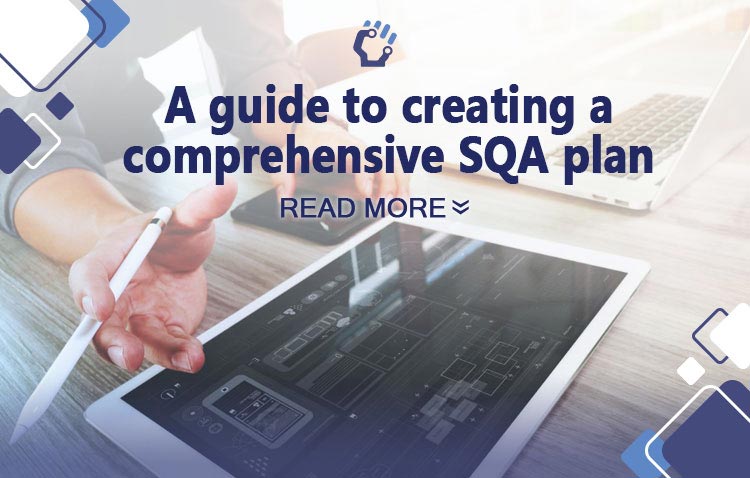What is Exploratory Testing and Why is it Important?
Exploratory Testing is a dynamic approach in software testing, where predefined test cases aren't used. Instead, testers explore the system in real time, noting ideas about what to test as they go. This method prioritizes thinking and adaptability, making it well-suited for Agile models. It's about discovery, investigation, and learning, allowing testers to exercise personal freedom and responsibility.
Unlike scripted testing, where test cases are designed first and executed later, exploratory testing integrates both design and execution simultaneously. This approach is crucial because it fosters a deeper understanding of the system's behavior, encourages creative problem-solving, and uncovers unexpected defects that might be missed in traditional scripted tests.
As its name implies, exploratory testing is about exploring, and finding out about the software, what it does, what it doesn't do, what works, and what doesn't work. The tester is constantly making decisions about what to test next and where to spend the (limited) time.
read more: Best Practices for Defect Tracking and Management in Software QA
How to Plan and Execute Exploratory Testing Sessions
Planning and executing effective exploratory testing sessions is a crucial aspect of ensuring software quality. When preparing for a session, consider using various tools, techniques, and heuristics such as test data, environments, design patterns, oracles, and checklists.
During the actual testing, closely observe the software's behavior and output, carefully analyze the results and feedback, make necessary adjustments to your approach, and meticulously document your findings. This approach enhances your ability to uncover unforeseen issues, understand the system's nuances, and adapt your testing strategy in line with the evolving software.
Following is a step-by-step process on How to perform Exploratory Testing which is also called session-based test management:
Step 1: Create a Bug Taxonomy (classification)
· Categorize common types of faults found in the past projects.
· Analyze the root cause analysis of the problems or faults.
· Find the risks and develop ideas to test the application.
Step 2: Test Charter
· The Test Charter should include these questions:
1. What features to test?
2. What needs to be looked
3. What features to test?
· Test ideas are the starting point of exploration testing.
· Test charter helps determine how the end user could use the system.
Step 3: Time Box
· This method includes a pair of testers working together for not less than 90 minutes.
· There should not be any interrupted time in those 90-minute session.
· Timebox can be extended or reduced by 45 minutes.
· This session encourages testers to react to the response from the system and prepare for the correct outcome.
Step 4: Review Results
· Evaluation of the defects.
· Learning from the testing.
· Analysis of coverage areas.
Step 5: Debriefing
· Compilation of the output results.
· Compare the results with the charter.
· Check whether any additional testing is needed.
Tips and Tools for Effective Exploratory Testing
Here are some valuable tips to enhance your exploratory testing efforts in software testing.
Exploratory Testing is everything
When it comes to exploratory testing in software testing, remember that it goes beyond just working products. Take the time to delve into various aspects such as layout, mockups, databases, diagrams, API functionality, features, GUI, and specifications.
Comprehensive exploratory testing involves studying every component that could offer valuable insights. By broadening your scope and examining diverse elements, you can uncover hidden issues and gain a deeper understanding of the software's quality and performance. This approach aligns with effective exploratory testing practices and contributes to overall software quality assurance.
Try to think in terms of an Exploratory Image
When practicing exploratory testing in software testing, adopt an exploratory mindset. Approach your testing with the curiosity of an investigator, seeking to uncover insights and answers to questions about potential risks and assumptions.
Channel your professional curiosity into purposeful exploration, enhancing your ability to detect issues and anomalies. Think of yourself as a digital detective, piecing together the puzzle of the software's behavior and functionality. By adopting this perspective, you can conduct thorough and effective exploratory testing that contributes to software quality assurance and a comprehensive testing strategy.
Identify the current test context
When engaging in exploratory testing as part of software testing, it's vital to identify and understand the specific context in which you are testing. Unlike a one-size-fits-all approach, exploratory testing requires adapting to the unique circumstances surrounding each testing scenario. Consider factors beyond the overall testing objectives and software functionality.
Reflect on the collaborative dynamics within your QA team and your ability to conduct experiments collectively. Take into account previous business decisions and the present goals of your product company. These elements play a significant role in shaping the type of session reports you should generate. By tailoring your approach to the current test context, you enhance the effectiveness of exploratory testing and contribute to software quality assurance efforts.
Don’t Become Hostage to Your Requirements
When conducting exploratory testing within the realm of software testing, it's important not to let test requirements become restrictive. While test requirements, often framed as user stories with acceptance criteria, are crucial, they should serve as a foundation for generating test ideas and discussions rather than becoming rigid constraints.
Your requirements should facilitate the exploration of various application aspects during exploratory testing rather than acting as limiting factors. By maintaining flexibility and open-mindedness, you enable more comprehensive and effective testing strategies. This approach aligns with software quality assurance principles and promotes agility in the testing process.
Divide Solutions into Categories
When engaging in exploratory testing in the realm of software testing, it's beneficial to organize your findings for better clarity and insight. A helpful method for this purpose is the PQIP approach, which involves categorizing your observations into problems, questions, ideas, and praise. This structured approach lends meaning and organization to your notes, making it easier to analyze and address different aspects of the software.
Additionally, employing various colors and icons can enhance your communication by conveying dependencies and relationships within your observations. These practices align with software quality assurance principles and contribute to a more effective and organized exploratory testing process.

Here are some valuable Tools for Exploratory Testing:
1. Session Stack: Record and replay user sessions to understand user interactions and identify potential issues.
2. Charles Proxy: Monitor network traffic to uncover potential vulnerabilities, security flaws, and unexpected behaviors.
3. Browser Developer Tools: Built-in browser tools for inspecting elements, debugging JavaScript, and analyzing network requests.
4. Mind Meister: Create mind maps to visually organize your testing approach and explore different aspects of the application.
5. TestRail: Test management tool that can be adapted for exploratory testing sessions and result documentation.
Read more: Test Coverage Metrics: Ensuring Comprehensive Testing
Exploratory Testing vs. Scripted Testing: Pros and Cons
Exploratory testing and scripted testing are two distinct approaches employed in software testing, each with its own set of characteristics and benefits. Exploratory testing involves testers assessing the system spontaneously without predetermined test documents. This approach is suitable for projects with rapid deliveries and frequent changes, where time for test planning and document creation is limited.
In contrast, scripted testing is utilized in projects with allocated time for testing, often adhering to traditional software development methodologies. In scripted testing, test design and execution occur in a structured manner, whereas exploratory testing emphasizes simultaneous testing and exploration.
Both approaches offer pros and cons, and the choice between them usually depends on factors like the application's nature and the development methodology used. These distinctions shed light on the differing strategies and considerations of exploratory testing versus scripted testing, showcasing their roles within the realm of software quality assurance.
Now Let's check the Pros and Cons of Exploratory Testing and Scripted Testing:
Pros & Cons of Exploratory Testing
Pros:
Flexibility: Exploratory testing allows testers to adapt quickly to changes and unexpected scenarios. Testers can explore the application without being confined by a predefined script.
Creativity:Testers can employ their creativity and domain knowledge to discover complex and subtle bugs that might not be captured by scripted tests.
Real-world Scenarios: Exploratory testing can simulate real-world user behavior and interactions, providing insights into user experience and uncovering issues that scripted tests might miss.
Cons:
Coverage Concerns: Since exploratory testing is less structured, there's a risk of missing out on certain scenarios or functionalities, potentially leading to incomplete test coverage.
Documentation: The informal nature of exploratory testing might lead to difficulties in documenting test cases and their outcomes for future reference.
Pros & Cons of Scripted Testing
Pros:
Consistency: Scripted tests provide consistent and repeatable test scenarios, ensuring that the same steps are followed every time testing is performed.
Comprehensive Coverage: Test scripts can cover a wide range of scenarios, ensuring that all specified functionalities are tested thoroughly.
Cons:
Rigidity: Scripted tests might miss unexpected scenarios or interactions that exploratory testing could uncover.
Limited Adaptability: Scripted tests can become outdated if the application's functionality changes, requiring constant maintenance.
read more: Automated vs. Manual Testing: Finding the Right Balance
How to Incorporate Exploratory Testing into Agile Development
Incorporating exploratory testing into Agile development is recognized as a progressive approach in software organizations, especially for Agile processes. This dynamic testing method plays a pivotal role in agile software environments by expediting the development of agile software projects, particularly for software testers.
Agile methodology involves producing software in iterative steps, encompassing requirements gathering, design, development, testing, deployment, and review within predefined time frames. Exploratory testing seamlessly aligns with this approach, promoting continuous learning and adaptation. It doesn't rely on pre-defined test scenarios or cases, but instead leverages random scenarios based on past experiences and user requirements understanding.
This method values testers as integral participants in the testing process, offering a familiar testing environment. Its effectiveness and efficiency make it a valuable addition to Agile projects, with many industries embracing its advantages within Agile development endeavors.
Incorporating exploratory testing into Agile development can enhance the overall testing process and help ensure the quality of your software. Here are steps to effectively integrate exploratory testing into an Agile development workflow:
Understand Exploratory Testing
Exploratory testing involves testers actively exploring the application without predefined test scripts. It focuses on finding defects, understanding the system, and improving test coverage.
Collaboration
Ensure that testers, developers, and other stakeholders collaborate closely. This collaboration helps in understanding the application's behavior, identifying potential risks, and sharing insights.
Session Planning
Plan dedicated exploratory testing sessions during each sprint. Set specific goals and objectives for these sessions, such as focusing on a particular feature or user story.
Flexible Test Design
Unlike scripted testing, exploratory testing doesn't rely on pre-defined test cases. Testers use their creativity to design tests on-the-fly based on their understanding of the application.
Bug Hunting
Encourage testers to actively look for defects, usability issues, and unexpected behaviors during exploratory testing.
Read more: The Role of Software QA in Agile Development Methodologies

Exploratory Testing Case Studies and Best Practices
Exploratory Testing Case Studies
Mobile App Testing:
Many mobile app development companies use exploratory testing to find user interface glitches and functional bugs across various devices and operating systems.
E-commerce Platforms:
Online shopping platforms employ exploratory testing to ensure smooth navigation, proper order processing, and payment functionality.
Gaming Industry:
Video game developers use exploratory testing to identify gameplay issues, visual glitches, and other unexpected behavior that might affect the player's experience.
The best exploratory testing practices
Have the adequate resources
To implement the best exploratory testing practices, having adequate resources is paramount. Exploratory testing empowers testers with individual freedom and accountability to decide where and how to test, emphasizing the importance of functionalities and paths they deem crucial. Thus, providing the right resources is vital for launching successful exploratory testing phases. Testers need comprehensive bug hunting experience to comprehend and analyze the digital product under scrutiny and identify potential risks. Ensuring testers possess multi-faceted skills, creativity, curiosity, autonomy, keen observation, and improvisational abilities is essential. They must adapt their testing approach based on discoveries made during the investigation, making resource adequacy and skilled testers foundational for effective exploratory testing.
Don’t try to test everything
As part of the best exploratory testing practices, it's crucial not to attempt testing every aspect. The goal of exploratory testing isn't about quantity but rather adhering to the campaign's requirements. Instead of striving to test everything, it's recommended to focus on specific objectives.
Some campaigns may prioritize addressing essential points and managing critical risks, while others might adopt a continuous improvement approach, aiming to uncover subtle, hidden bugs. This approach ensures that the testing effort is targeted, effective, and aligned with the project's objectives.
Create a complete bug report
As part of the best exploratory testing practices, creating a comprehensive bug report is essential. This report compiles and provides detailed information about the incidents discovered during the testing phases. Bug reports play a vital role in software quality assurance, aiding in the identification and resolution of issues. They serve as a valuable tool for communication between testers, developers, and stakeholders, ensuring that identified problems are effectively addressed within the software testing and development process.
Debrief
As one of the best exploratory testing practices, conducting a debrief is crucial. This process involves analyzing the bug report and gathering insights from individual testers' feedback. The aim is to determine whether additional testing is necessary based on the identified issues and their severity. Debriefing serves as a decision-making step in the software quality assurance process, helping teams assess the testing outcomes and make informed choices about the next steps, such as further testing, bug fixes, or improvements in the development process.








